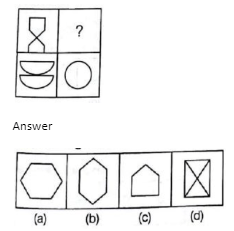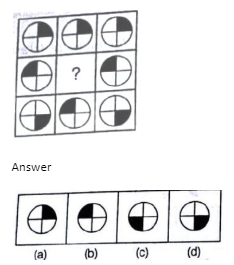The diagrams or figures in questions using figure matrices are arranged into groups that resemble a rectangular matrix. The Figure Matrix is a collection of diagrams arranged in the shape of a matrix. There is a rule for every diagram in the figure matrix. This rule must be understood in order for you to use it to guide your judgments going forward.
Matrix
A matrix is a rectangular array or table with numbers or other objects arranged in rows and columns. Matrices is the plural version of matrix. The number of columns and rows is unlimited. Matrix operations include addition, scalar multiplication, multiplication, transposition, and many others.
There are some guidelines to follow when conducting these matrix operations, such as the fact that they can only be multiplied if the first and second sets of columns are precisely the same, while they can only be added or subtracted if they have the same number of rows and columns.
Matrix Definition
A matrix is a rectangular array of values that are defined for mathematical operations including addition, subtraction, and multiplication. The quantity of rows and columns in a matrix—also referred to as the matrix’s order—determines the matrix’s size. When written as a 6×4 and read as 6 by 4, the order of a matrix with 6 rows and 4 columns is displayed.
Figure Matrix
In these questions, a matrix with many sets of figures that all adhere to the same rule is provided. In order to find the missing figure in the incomplete set, the candidate must first analyze the complete sets to identify the common rule.
Checking the student’s capacity to access forms and symbols that are connected by a rule is a key component of non-verbal reasoning. For instance, in a number series, a rule connects certain integers to one another. Similar to this, each segment in the figure matrix is connected by a rule. Let’s work through a few instances to clarify what we exactly mean by this.
Solved Examples
Example.1. In the following question, find out which of the answer figures (a), (b), (c) and (d) completes the figure matrix?
Answer
- (a)
- (b)
- (c)
- (d)
- None of these
Answer:
There is no doubt that the second figure in the upper row has twice as many dots as the first. Likewise, in the lower row, there must be twice as many dots in the second figure as in the lower first figure. As a result, there are 6 dots in the missing segment, or 2×3 dots. So, 4 is the correct answer.
Example.2. In the following question, find out which of the answer figures (a), (b), (c) and (d) completes the figure matrix?

- (a)
- (b)
- (c)
- (d)
- none of the above
Answer
The first figure’s two components are split into two and joined along their longer sides. The second figure is then created by removing the common side. The solution is therefore 2.
Example 3. In the following question, find out which of the answer figures (a), (b), (c) and (d) completes the figure matrix?
- (a)
- (b)
- (c)
- (d)
- none of the above
Answer
It is obvious that in each row, the third figure’s element count equals the difference between the first and second figures’ element counts. The third figure also has the same kinds of elements as the first figure. Thus, it is evident that the solution is 3.
Examples of Higher Order
Example 4. In the following question, find out which of the answer figures (a), (b), (c) and (d) completes the figure matrix?
Answer
- (a)
- (b)
- (c)
- (d)
- none of these
Answer
All of the arrows in the question figure point in the same direction. They are all pointed in the opposite direction of the clock. Therefore, the choice is either (b) or (d). The arrow’s form in (b) is unnecessarily peculiar. Therefore, only shape 4 will fit the matrix.
Example 5. In the following question, find out which of the answer figures (a), (b), (c) and (d) completes the figure matrix?
Answer
- (a)
- (b)
- (c)
- (d)
- none of the above
Answer
There is one “+,” one “o,” and one “x” in each column. Each column’s initial figure has no boundaries, and its second figure is enclosed in a square. Two squares surround the third figure. As the third column contains the symbols “+” and “o.” Therefore, figure “x” will be encircled by two squares, and 1 is the right answer.
Conclusion
In this article we have studied the Figure Matrix. In the matrix, there are rows and columns. Row refers to a horizontal line, and column to a vertical line. The components of rows and columns have a certain relationship to one another.
For these questions, a matrix is provided with one space left empty or marked with a question mark. The matrix is followed by four response figures. The candidate needs to determine which answer figure will get a question mark in front of it.
 Profile
Profile Settings
Settings Refer your friends
Refer your friends Sign out
Sign out
















